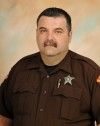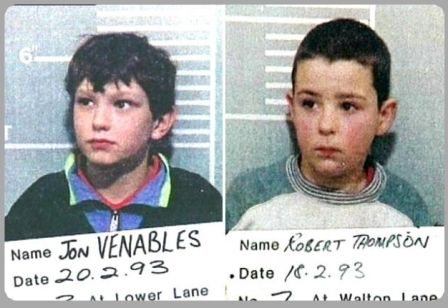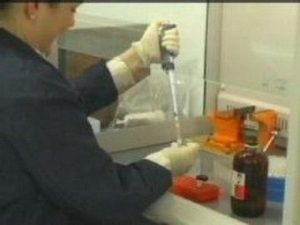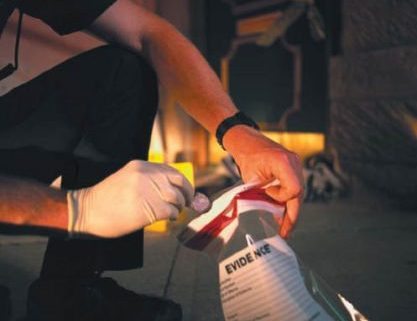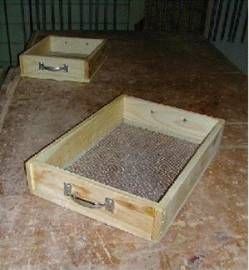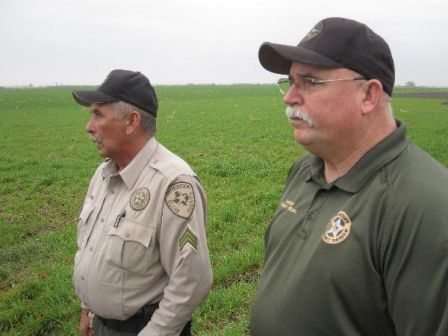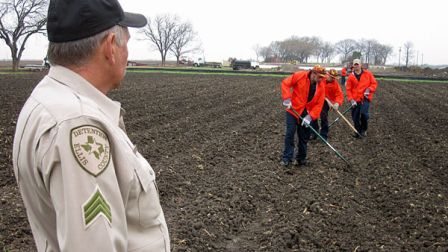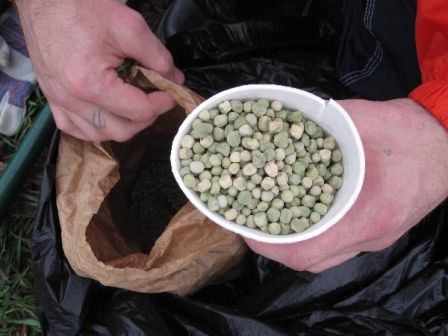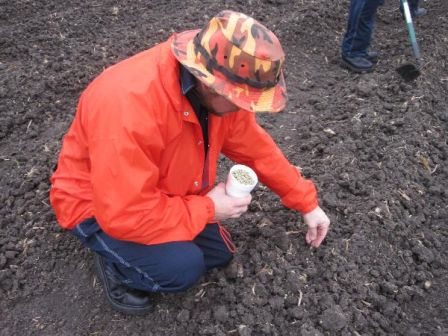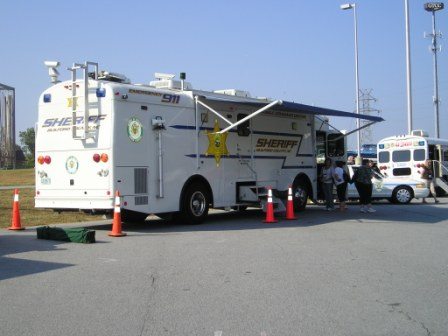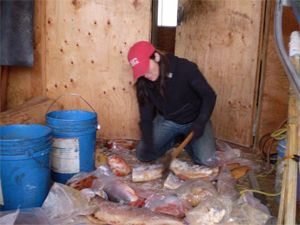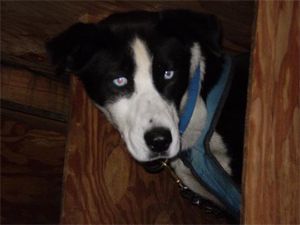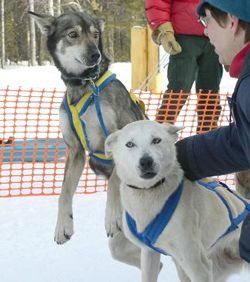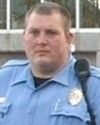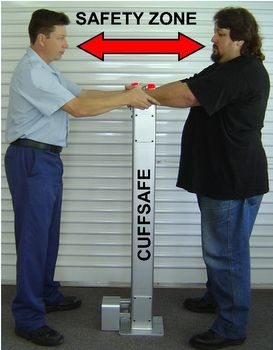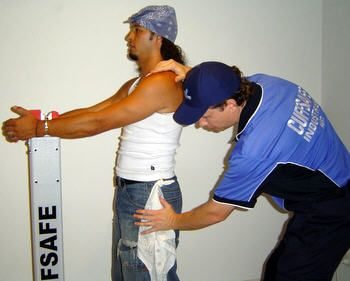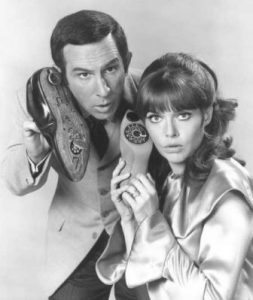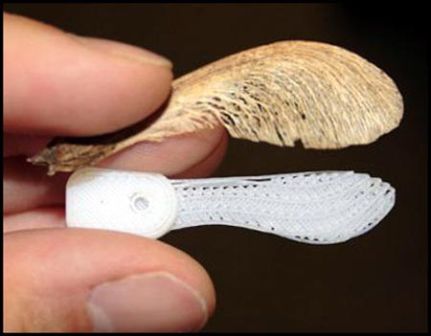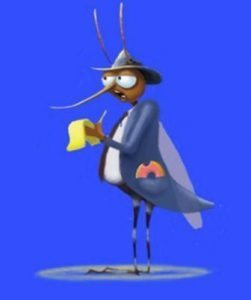“All cops know, and Officer Ben Sherman is beginning to understand that sometimes you can’t think about it, you just gotta make that leap.”
Well, after a season packed with gut-wrenching scenes, nerves plucked like banjo strings, and a cast that knows how to bring real police work into our living rooms each and every week, it’s over. Southland’s season ended with a handful of cliffhangers and a bag full of unanswered questions.
Last night’s episode, Graduation Day, brought an end to Ben Sherman’s field training. And what an action-packed last day it was. But first things first.
The show opened with Cooper lying in bed facing yet another day of pain and pills. And anyone who’s ever experienced the agony of a herniated disk and pinched nerves (me for one – surgery three years ago) knows exactly what Cooper is going through. But combine all that pain and suffering with a cop’s job, well, it’s a disaster waiting to happen. There’s no way to defend yourself, or anyone else, either. A cop in that situation is nearly helpless, and he’s a danger to everyone (especially other officers) around him. But John rolls out of bed to begin the day…after eating a wad of painkillers.

– Lydia, on the other hand, is in bed, but she’s not rolling out of it. At least not for the moment. In her opening scene she’s giving Mama a little taste of what she’s been dishing out…having to listen to Lydia’s between-the-sheets action. And that action was with her partner’s 20-something-year-old son. Whew! Sparks would fly later about that match-up, and Josie was the one igniting the fire. Nope. She was not happy. In fact, she called Lydia a cradle-robber.
– It’s graduation day for the boots. The day you finish your field training and are finally able to face the streets alone, without your FTO (field training officer), is one of the happiest days in an officer’s career. And that joy was clearly seen on the rookie’s faces when the announcement was made to the shift that this was indeed their last day of training. The seasoned veterans displayed their own happiness by stuffing the a/c vent on Ben’s side of the car with baby powder. Yep, when John fired up the engine Ben was dusted with the white stuff, like a newborn baby’s bottom. Good scene here. Cops love to play practical jokes, and that’s a side the public rarely sees. Like spraying a toilet seat with pepperspray a few minutes before an unsuspecting officer catches the urge for a little bathroom break. Yep, picture that same officer thirty minutes later after his body temp begins to warm up (sweating a little opens the pores and sends that chemical into high gear). A “hot” seat would be putting it mildly.
– Ben has to deal with a nut in a wheelchair who insists on playing in traffic. Again, these are the sort of calls you don’t see, but happen many times during a shift. It’s not all car chases and shootouts. Sometimes it’s all about crazies and weirdos.
– Ben and John respond to a domestic, where the father (a gang member) has just given his young son a gang tattoo on his tiny chest. He’s also been teaching the kid to hate cops and the kid proves that by pointing a finger at Cooper, pretending to shoot him, twice. Cooper responds by affectionately rubbing the kid’s head and walking away. Cooper knows the kid doesn’t stand much of a chance in the world, but also knows the fight to save him is nearly a lost cause. I’ve seen this sort of thing many times over the years, parents teaching their kids to hate cops. In fact, when I used to drive through some neighborhoods, the children—little kids—yelled, “Five Oh,” and then ran away to hide. That’s not something they picked up on their own.
– Dewey and Chickie are together again. Chickie’s moving on to another assignment, and tells Dewey so. Dewey, not really caring about Chickie’s decision, spends his shift attempting to save a prostitute from herself. She’s a self-destructing crackhead who’s quickly heading for the bottom of the pit. Many people think that cops simply react to crimes in progress, but that’s a long ways from being accurate. Believe it or not, cops do care for people, and sometimes they try to save them from the perils of life, one crackhead at a time. It doesn’t always work, but they try. And those who do try, often use their own life experiences as tools to help others who are in trouble, like Dewey and his substance abuse troubles. So good stuff here.
– Ben and John engage in a vehicle pursuit. John’s driving, so Ben assumes control of the radio (did you notice he buckled up as soon as the pursuit began?), constantly providing their location. He also watched for traffic and other hazards, announcing, “Clear left,” or, “Clear right,” as they approached intersections. This let Cooper know it was okay to proceed.
– Same thing when the van crashed. Ben yelled, “Passenger side clear,” meaning that no one was there. Excellent procedure.
– Cooper’s driving along the streets when a man gestures toward him with an extended middle finger. Cooper mumbles to himself, “Ah, the warm embrace of the grateful populace we serve.” That’s sort of the feeling cops get after a dealing with people, day after day, who hit them, spit on them, and bite, scratch, and kick them. Oh, and give them the finger for no reason at all other than the fact that they’re cops. BUT, when someone breaks into those same people’s homes and steals their TV or their prized family heirlooms, suddenly the cops become heroes.
– A radio call…”Shots fired. Officer down.” Everyone who’s available heads that way to assist. And that’s how it is in real life, too. When a fellow officer is injured the brethren respond to help their own.
And guess who shot the officer? Yep, it was Leprechaun, the guy who Sammy thinks killed Nate. Well, the little tatted-up gang member points a gun at the entourage of cops who cornered him and quickly finds himself on the receiving end of a huge dose of “lead poisoning.” And Sammy makes sure the last thing the cop-killer hears before dying is Nate’s name. How fitting it was for Sammy’s face to be the last thing Leprechaun saw before closing his eyes for the final time. But, was he really the guy who killed Nate? Hmm…
– Sammy’s baby entered the world last night. Tammy gave birth to a boy and Sammy was there to hold him shortly after he cried for the first time. Naming the child Nathaniel was a nice tribute to his former partner. But what role will Sammy be allowed to play in his child’s life? Will Tammy let him see the baby as often as he wants? And, Sammy’s going back in uniform to teach rookies how to stay safe. Both of these events are life-changing. Are Sammy’s emotions stable enough to handle it? Another hmm…
Ben and John encounter the kidnapper (the guy in the earlier pursuit) and he runs. Of course, Ben chases on foot while Cooper follows in the patrol car. Now, Cooper didn’t do that simply because of his bad back. No. If, and when, the guy is caught they’ll need the car on the scene. You don’t want to be in the position of dragging a fighting man twenty blocks back to your vehicle. Besides, rookies always do the running! Been there, done that…both the running and, in later years, the driving.
Well, the pursuit is tough. Through alleys, over a fence, up a fire escape, across rooftops, a HUGE jump from one building to another, and finally the struggle where Ben winds up fighting for his life. By the way, Ben McKenzie actually made that jump. There was no stunt double. However, he did wear a wire. Still…
Cooper, bless his heart (a universal southern expression for…that kid is really ugly, or you really didn’t do such a hot job with…) tried to follow Ben, knowing he needed to back up his partner. But his bad back got him there after the fight was over. And the fight, well, it was pretty doggone realistic. And why not? Ben was fighting with a real-life mixed martial arts dude who played the role of bad guy for this episode.

Ben’s struggle with the suspect was great. He had to switch from trying to arrest the guy to fighting for survival. Finally, the suspect decided it was time to make his escape and again attempted to jump from one building to another, but didn’t make it the second time. And the fall was simply fantastic. The guy’s legs pumped and wriggled as if he were trying to run away from what was waiting for him at the bottom. A really good scene. Great job, Ben.
I have to say again just how great the camera work and directing are in this show. The camera really seems like another character. This stuff is so good.
Okay, I know war stories get old, but Ben’s fight scene reminded me of the time when I worked for the sheriff’s office and answered a domestic call way out in the far corner of the county. It was just after shift change and I was working the graveyard shift, alone. I knocked on the door and an obviously battered and bruised woman answered the door. She said her husband had left and that she was alone. Well, I didn’t believe her and asked her to step outside. Suddenly her husband, a man approximately 6’6″ and 320lbs stepped from behind the door and pushed her to the floor, and then lunged at me. Needless to say, it was on!
The two us rolled around inside that house, fighting, until there was absolutely not one single piece of furniture left standing. We even knocked down pictures from the walls. Soon, the man clutched my throat with both hands and began choking me. The only weapon I managed to find was my flashlight, so I began hitting the behemoth on his head with all my might. Well, the flashlight broke and batteries flew everywhere. And, of course, without the weight of the batteries, the flashlight was nearly useless as a weapon.
Suddenly, the man released his grip and fell to the floor. And, miraculously, I saw a flash of a brown uniform fall on top of him. The cavalry had arrived! One of the deputies who had worked the previous shift heard me when I signed off on the call and decided to head my way in case things didn’t go so well. And thank goodness he did. The two of us managed to get the guy cuffed and seated in the police car. We did, however, have to stop by the hospital on the way to the jail so the doctor could stitch up a few nasty cuts on the suspect’s head. I guess my flashlight had found its mark a few times after all.
– Finally there was the emotional scene where Ben confronted Cooper about his drug problem. In fact, he used his big toe to draw a line in the sand, saying, “You’ve got two options. Either I drive you to rehab or I go to the watch commander and tell him to give you a piss test.”

The season ended with Ben driving his mentor to rehab, where Cooper steps out of the car and then turns back to face Ben, and says, “Hey, Boot. Thank you.”
John Cooper then sucks it up and goes inside and confesses to the nurse that he is indeed a drug addict. But he makes it clear that he is also a cop.
*There has been no announcement of a season four for Soutland. We can only hope that TNT sees fit to bring back the most realistic cop show that’s ever been on television. I know I hope to see another season. After all, what else is there for me to review? American Idol??
Also, I’d like to thank Michael Cudlitz (Cooper), C. Thomas Howell (Dewey), and Shawn Hatosy (Sammy) for allowing me to join them on the live chats with their fans. It was fun answering fan questions regarding the accuracy of the police procedure on the show. Of course, it was an easy task since the show is incredibly accurate.
Hey, guys…How about a walk-on part for me next year? I know the way to L.A.!




